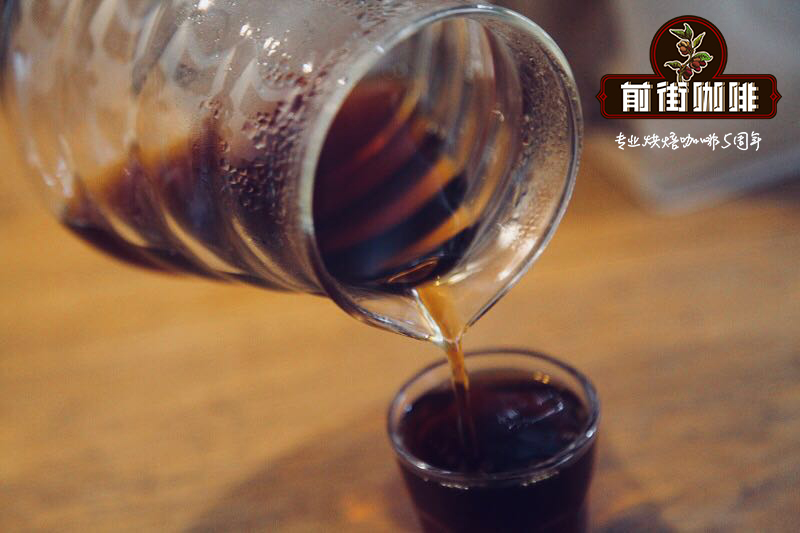Tanzania Kilimanjaro Coffee Introduction| Kilimanjaro Coffee vs Kenya AA Comparison

Mount Kilimanjaro in Tanzania has a slightly lower body and acidity than its closest relative, Kenya AA Coffee, but still shows a very good mellow thickness and brightness, as well as a delicate balance and a refreshing cup of coffee.
Kilimanjaro coffee is also milder than Kenyan coffee, often showing a smooth, velvety texture with a hint of blackcurrant. Kilimanjaro coffee is rich in flavor, reflecting many advantages of Kenyan coffee, and is one of the top quality coffee in the world.
Kilimanjaro Coffee
Kilimanjaro Coffee grows on the volcanic slopes of the highest mountains in northeastern Tanzania. It has a unique flavor of origin, good mellow thickness and bright acidity, which makes it one of the best coffee in Africa.
Coffee harvesting and processing in Mount Kilimanjaro
If you take good care of it, Mount Kilimanjaro is undoubtedly one of the best coffee in the world. However, unlike Kenyan coffee, Mount Kilimanjaro pays more attention to the proper harvest and processing of coffee beans. The problem is the lack of coffee-related infrastructure in Mount Kilimanjaro, which is far less advanced than Kenya. A deeper problem is that coffee growers on Mount Kilimanjaro lack motivation and are very careful at all stages of coffee beans.
Therefore, although it is not difficult to find and buy Kilimanjaro coffee, it is relatively difficult to find the real Kilimanjaro coffee. It is hoped that this situation will improve in the future, as coffee beans in the region are better cared for. At present, coffee growers have only an incentive to separate and sell small coffee beans from the region, which has earned a premium. Coffee farmers usually don't care much about what to do with the beans.
Notes on buying Kilimanjaro Coffee
When you want to buy high-quality Tanzanian Kilimanjaro coffee, you'd better find a single Kilimanjaro coffee producing area. During the harvest and processing of coffee beans, from the aging of coffee beans to transportation, until they reach your mailbox, there are high-quality care records.
Coffee has a long chain of custody, it goes through many steps and goes through a lot of hands on you before there are many things that can go wrong and may pollute the quality of coffee beans, resulting in roasted flavor and aroma.
Kilimanjaro coffee politics
Coffee politics in the Kilimanjaro region is still fragile. There's a little bit of history: in 2005, for example, Pete Coffee and Tea launched a coffee from Mount Kilimanjaro in Tanzania, which they bought from 839 small-scale growers for the second year in a row, they can sell it directly to coffee roasters without having to participate in a national coffee auction.
In 2000, Peet began working with the Mount Kilimanjaro Professional Coffee Growers Association (KILICAFE), which had grown to more than 8000 small coffee growers by 2005.
One of the goals is to improve the quality and consistency of Kilimanjaro coffee beans. By bypassing national coffee auctions and selling directly to coffee roasters, farmers get higher prices, and the quality of gourmet coffee has been greatly improved.
In the past, the Kilimanjaro Coffee Growers Association (KiliCafe) was part of the Starbucks Coffee and Farmers' Rights (CAFE) program, which established long-term production best practices.
Kilimanjaro Federation of Local Cooperatives
The Federation of Local Cooperatives of Mount Kilimanjaro (KNCU) is the oldest cooperative in Africa, and coffee is their most important cash crop. They grow on the volcanic soil of Mount Kilimanjaro to produce wet-treated (washed) Arabica coffee. Coffee trees often interplant bananas.
More than 150000 smallholder farmers from nearly 100 rural societies provided KNCU with about 5300 tons of Arabica coffee. This coffee accounts for about 60 per cent of coffee in the region, although this proportion varies depending on the market and private trade agreements that provide competition.
KNCU is registered as a Fairtrade supplier and exports some coffee beans in the name of Fairtrade coffee. Coffee collected and traded by KNCU accounts for about 11% of the country's total coffee production.
KNCU also supports employees to provide development, training and inspection of organic coffee, working with farmers to improve quality and yield, while helping the environment and farmers to achieve higher profits.
WACHAGGA people of Kilimanjaro
More than 2000 small coffee farmers from Mount Kilimanjaro were selected to participate in the project, including Mosh coffee farmers and the mountain aboriginal Vachaga, who speak Bantu. They are the third largest ethnic group in Tanzania.
The Wakaga live mainly on the eastern and southern slopes of Mount Kilimanjaro, as well as Mount Meru and Mohi. For more than a thousand years, they have been known for their successful use of a wide range of irrigation systems, fertilization and other agricultural methods.
The fertile soil, ample rainfall and mild climate in Mount Kilimanjaro provide the best conditions for many small coffee farms in the region known as shambas, where coffee is usually intercropped with bananas.
High-quality organic farmers in the area help protect the fertility of the volcanic soil and preserve the trees under the shade. As a result of the elimination of intensive cultivation, coffee farmers have made higher profits and reduced health risks.
The KNCU project is carried out in cooperation with the Organic Export Promotion of Organic Trade (EPOPA) from Africa, which was established by the Swedish International Development Cooperation Agency (SIDA) in 1994.
Harvest coffee on Mount Kilimanjaro
At 5334 feet (5893 meters) above sea level, Mount Kilimanjaro is the highest freestanding peak in the world. The coffee harvest season in Mount Kilimanjaro lasts from October to February. About 1 million people live on the slopes of Kilimanjaro, where coffee cultivation is the only source of income for many. Recently, weather patterns that have changed due to climate change and temperature change have led to coffee leaf rust (locally known as "Roa"), which has destroyed more than 90 per cent of trees-enough for the local government to declare a state of emergency.
Important Notice :
前街咖啡 FrontStreet Coffee has moved to new addredd:
FrontStreet Coffee Address: 315,Donghua East Road,GuangZhou
Tel:020 38364473
- Prev

Introduction to the characteristics of Tanzanian coffee | what's the difference between Tanzanian coffee and Kenyan coffee?
The Tanzanian coffee review is somewhat similar to Kenyan coffee, showing bright and vibrant acidity, sometimes even bright, with a rich, full-bodied and full-bodied taste. High-quality Tanzanian coffee usually has a medium to full-bodied, full-bodied and smooth taste, with sweet berry-like, fruity and sometimes cedar flavors. The main body of Tanzania
- Next

What kind of coffee beans is Peaberry | what are the flavor characteristics of Tanzanian Peaberry coffee
What kind of coffee bean is Peaberry? Peaberry coffee beans, also known as small round beans, come from a kind of coffee cherry, which means that coffee cherries grow only one core, rather than the common two kernels. Usually, 1% to 9% of any coffee crop is made up of small round beans, which are usually separated from other coffee beans and sold at a high price because of their unique taste.
Related
- Detailed explanation of Jadeite planting Land in Panamanian Jadeite Manor introduction to the grading system of Jadeite competitive bidding, Red bid, Green bid and Rose Summer
- Story of Coffee planting in Brenka region of Costa Rica Stonehenge Manor anaerobic heavy honey treatment of flavor mouth
- What's on the barrel of Blue Mountain Coffee beans?
- Can American coffee also pull flowers? How to use hot American style to pull out a good-looking pattern?
- Can you make a cold extract with coffee beans? What is the right proportion for cold-extracted coffee formula?
- Indonesian PWN Gold Mandrine Coffee Origin Features Flavor How to Chong? Mandolin coffee is American.
- A brief introduction to the flavor characteristics of Brazilian yellow bourbon coffee beans
- What is the effect of different water quality on the flavor of cold-extracted coffee? What kind of water is best for brewing coffee?
- Why do you think of Rose Summer whenever you mention Panamanian coffee?
- Introduction to the characteristics of authentic blue mountain coffee bean producing areas? What is the CIB Coffee Authority in Jamaica?

